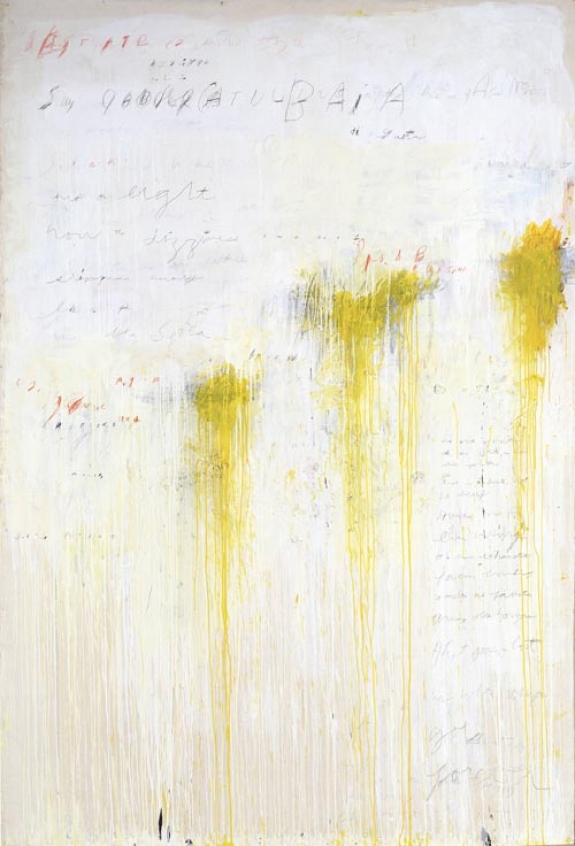The significance of the exhibition “Twombly and Poussin: Arcadian Painters,” at Dulwich Picture Gallery in London, changed abruptly a few days after it opened.
It was conceived as an exercise in compare and contrast between a contemporary artist and an old master (Nicolas Poussin, 1594-1665). With the news of Cy Twombly’s death on July 5, the natural response of a viewer shifted. Instead, this became a mini-retrospective of a historic figure in modern art, paired with pictures by a predecessor he revered.
In recent years, London audiences have caught up with Twombly, born in 1928. His painting -- and also his less- familiar sculpture -- was the subject of a triumphant exhibition at Tate Modern in 2008. That show proved that he made a unique contribution to the visual art of our times.
Or, to put it another way: There is nothing quite like a Twombly. As he said in a rare interview with Nicholas Serota, director of the Tate, he never took to the “Wagnerian American” mode of painting.
A generation younger than abstract expressionists such as Mark Rothko and Jackson Pollock, Twombly took their idiom and made of it something less grandiloquent and more quirkily intimate. Over 60 years, his work developed into one of the most rich and idiosyncratic oeuvres in contemporary art -- loosely gestural, romantic, often containing stray words or fragments of poetry written onto the canvas.
Chilly Eroticism
Poignant though it has become in the light of Twombly’s death, it must be said that at first glance the Dulwich show is puzzling. These are two considerable artists from wildly diverse eras. Poussin (1594-1665) was the master classicist of 17th- century art. He took the carnal, erotic idiom of Venetian mythological painting and disciplined it into a stately, intellectual and, if you don’t like it, chilly grandeur.
So why put him on the same walls as Twombly? The basic premise is that Twombly, unexpectedly, loved Poussin. He told Serota, “I had different crushes on different artists. But I look a lot at Poussin.” And, even more vividly, “I would’ve liked to be Poussin, if I’d had a choice, in another time.”



